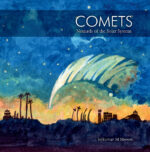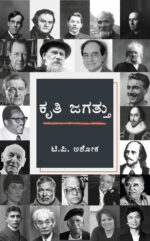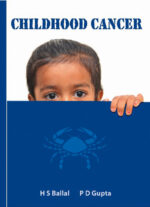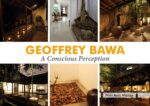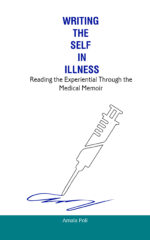Kannadadalli Patthyaparishkarana- Ondu Kaipidi
₹150.00
Author: N T Bhat
ಸ್ವಾನುಭವವಷ್ಟನ್ನೇ ಬಂಡವಾಳವಾಗಿರಿಸಿಕೊಂಡು ತೊಡಗಿದ ಉದ್ಯಮ ಈ ಹೊತ್ತಗೆಯ ರಚನೆ. ಕನ್ನಡದಲ್ಲಿ ಕರಡಚ್ಚು ಪ್ರತಿಗಳನ್ನು ತಿದ್ದಿಕೊಟ್ಟ ಅನುಭವಗಳನ್ನು ತುಸು ವಿಸ್ತರಿಸಿ ಸಣ್ಣ ಕೈಪಿಡಿಯ ರೂಪದಲ್ಲಿ ತಂದರೆ ಒಳ್ಳೆಯದಲ್ಲವೇ ಎಂಬ ಆಲೋಚನೆ ಈ ಕಿರುಹೊತ್ತಗೆಯ ರಚನೆಯ ಮೂಲ. -ಎನ್. – ತಿರುಮಲೇಶ್ವರ ಭಟ್ಟ ಡಾ. ತಿರುಮಲೇಶ್ವರ ಭಟ್ಟರು ದೀರ್ಘಕಾಲ ಅನುವಾದಕ್ಷೇತ್ರದಲ್ಲಿ (ಇಂಗ್ಲಿಷ್ನಿಂದ ಕನ್ನಡಕ್ಕೆ, ಕನ್ನಡದಿಂದ ಇಂಗ್ಲಿಷ್ಗೆ, ಜರ್ಮನ್ನಿಂದ ಇಂಗ್ಲಿಷ್ಗೆ, ಜರ್ಮನ್ನಿಂದ ಕನ್ನಡಕ್ಕೆ) ದುಡಿದವರು ಮತ್ತು ವಿವಿಧ ರೀತಿಯ ಪುಸ್ತಕಗಳ ಯೋಜನೆ, ಸಂಯೋಜನೆ, ಪುನರ್ನಿರೂಪಣೆ, ಸಂಪಾದನೆ ಮೊದಲಾದ ಕೆಲಸಗಳನ್ನು ಮಾಡಿದವರು. ಈಯೆಲ್ಲ ಕೆಲಸಗಳಲ್ಲಿ ಸತತವಾಗಿ ಒಳಗೊಂಡಿರುವುದು ಕರಡಚ್ಚು ತಿದ್ದುವ ಕೆಲಸ. ಯಾವುದೇ ಕಾರ್ಯಕ್ರಮದಲ್ಲಿದ್ದರೂ ಅದರ ಎಡೆಯೆಡೆಯ ಬಿಡುವಿನಲ್ಲಿ ಒಂದಿಷ್ಟು ಕರಡಚ್ಚು ತಿದ್ದುವ ಕೆಲಸವನ್ನು ಸತತವಾಗಿ ಮಾಡುತ್ತಲೇ ಬಂದವರು. ಪಠ್ಯಪರಿಷ್ಕರಣದ ಹಲವು ಹಂತಗಳನ್ನು ಚೆನ್ನಾಗಿ ಬಲ್ಲ ಅವರು ತಮ್ಮಲ್ಲಿರುವ ಮಾಹಿತಿಯನ್ನೂ ಅನುಭವವನ್ನೂ ಕ್ರೋಡೀಕರಿಸಿ ಕನ್ನಡದಲ್ಲಿ ಪಠ್ಯಪರಿಷ್ಕರಣದ ಆವಶ್ಯಕತೆಯೇನೆಂಬುದು ಸರಳವಾಗಿ ಈ ಪುಸ್ತಕದಲ್ಲಿ ನಿರೂಪಿಸಿದ್ದಾರೆ. ಅವರಿಂದ ಭಾಷಾಕ್ಷೇತ್ರಕ್ಕೆ ಇನ್ನಷ್ಟು ಸೇವೆ ಸಲ್ಲಲಿ ಎಂಬುದು ಮನದಾಳದ ಆಶಯ. – ಪಾದೇಕಲ್ಲು ವಿಷ್ಣು ಭಟ್ಟ.
Interested readers may write to us at mup@manipal.edu about purchasing the book.
| Also available on |
| Categories: | Academic and Reference, Kannada |
|---|
Related products
-
Comets – Nomads of the Solar System
₹290.00This book introduces the general reader to the world of comets – those celestial visitors from the outer Solar System that occasionally visit the Earth’s neighbourhood and put up spectacular shows in the night sky. The world had geared up for just such a show at the end of 2013, when Comet ISON was expected to light up the night sky. Using the occasion to bring the world of comets to those interested, this book is a delightful read about the quirky world of these unpredictable visitors. Apart from lucidly and accurately updating the reader about what comets are, where they come from, why is it that they assume the fantastic shapes they do etc. “Comets” also regales the reader with myths about comets in various cultural contexts, snippets about famous comets in the history of mankind, anecdotes on comet discoveries and discoverers, the bewildering procedures followed while naming comets and much more. The book takes a hard look at the hype surrounding the fiery expectations about Comet ISON an cautions the reader that, while there was a good chance of the comet blazing forth in the skies of December 2013, there was a realistic chance that the comet would not survive its close encounter with the Sun. Sadly, the pessimistic predictions came true and the comet disintegrated as it went around the Sun. As we wait for chance to throw us a Great Comet to gaze at in the future, “Comets: Nomads of the Solar System” is an excellent guide to prepare for the event!
Interested customers may write to us at mup@manipal.edu about purchasing the book.
Also available on

-
Kriti Jagattu
₹310.00Author: T P Ashok
ಪ್ರೊ. ಟಿ. ಪಿ. ಅಶೋಕ ಅವರ ಇತ್ತೀಚಿನ ಕೃತಿ ಕೃತಿ ಜಗತ್ತು ಇಪ್ಪತ್ತಾರು ಪ್ರಬಂಧಗಳನ್ನು ಒಳಗೊಂಡ ಪುಸ್ತಕವಾಗಿದ್ದು, ವಿವಿಧ ದೇಶಗಳು, ಭಾಷೆಗಳು, ಸಂಪ್ರದಾಯಗಳು, ಪ್ರಕಾರಗಳು ಇತ್ಯಾದಿಗಳಿಗೆ ಸಂಬಂಧಿಸಿದ ಕೃತಿಗಳನ್ನು ಪರಿಚಯಿಸುವ, ವಿಶ್ಲೇಷಿಸುವ, ವಿಮರ್ಶಿಸುವ ಮತ್ತು ಸ್ಪಷ್ಟಪಡಿಸುವ ಮತ್ತು ಸಾಹಿತ್ಯದ ಒಂದು ನೋಟವನ್ನು ನೀಡುತ್ತದೆ. ಇಡೀ ಪ್ರಪಂಚ. ಪ್ರಬಂಧಗಳು ಸಾಮಾಜಿಕ, ಸಾಂಸ್ಕೃತಿಕ ಮತ್ತು ರಾಜಕೀಯ ಘಟನೆಗಳಿಗೆ ಮತ್ತು ಕಳೆದ ಐನೂರು ವರ್ಷಗಳಲ್ಲಿ ನೈತಿಕ, ಮಾನಸಿಕ ಮತ್ತು ಆಧ್ಯಾತ್ಮಿಕ ಬಿಕ್ಕಟ್ಟುಗಳಿಗೆ ಪ್ರಪಂಚದಾದ್ಯಂತದ ಶ್ರೇಷ್ಠ ಬರಹಗಾರರ ಪ್ರತಿಕ್ರಿಯೆಯನ್ನು ಪರಿಣಾಮಕಾರಿಯಾಗಿ ಪ್ರಸ್ತುತಪಡಿಸುತ್ತವೆ. ಈ ಕೃತಿ ಪ್ರಪಂಚವು ಕನ್ನಡ ಸಾಹಿತ್ಯ ಪ್ರಪಂಚದೊಂದಿಗೆ ಸಂಬಂಧವನ್ನು ಸ್ಥಾಪಿಸುತ್ತದೆ ಮತ್ತು ಆದ್ದರಿಂದ ಪುಸ್ತಕದ ವಿಶೇಷ ಮಹತ್ವವನ್ನು ಹೊಂದಿದೆ.
Interested readers may write to us at mup@manipal.edu about purchasing the book.
Also available on

-
Linear Algebra with Applications
₹650.00Linear Algebra with Applications portrays selected articles published earlier by Prof Ravindra B Bapat in various reputed journals. This volume published in honour of Prof Bapat, on the occasion of his 60th birthday, consists of his original research articles written in the area of (i) Permanent, Determinant and their applications, (ii) Non-negative Matrices, (iii) Matrix Methods in Statistics and Graph theory, and (iv) Generalized Inverses of a Matrix. Starting with an article A Generalization of a Theorem of Ky Fan on Simplicial Maps, his first article published in 1980, several articles probing the properties of permanent and determinant, characterization of generalized inverses, spectral properties of graphs, and applications of matrix methods in statistics are compiled in this volume. The articles selected in this book will certainly inspire the young linear algebraists and provide several matrix techniques to solve different problems in the area of applied linear algebra.
Interested readers may write to us at mup@manipal.edu about purchasing the book.
-
Childhood Cancer
₹185.00Authors: H S Ballal, P D Gupta
Childhood Cancer is a major medical problem in most of the societies of the modern world. Though enough literature is available on the subject, it is not easily intelligible to common people. An ordinary parent whose ward is affected by any form of childhood cancer would beat a loss without the basic information. This book is aimed at educating a non-professional who wishes to grasp the problem in detail and in a simple way. The book primarily deals with the signs and symptoms of cancer in children which enable early detection. It is written in a lucid manner to remove the myth among parents that diagnosis of cancer in children amounts to a death sentence. Many of the childhood cancers, if detected early, can be cured completely, and the patients can live the rest of their lives like any other normal people. The book is an attempt to create this awareness among parents through proper information about the disease. Further, the book would also serve as a manual for MBBS students and professionals in other fields for primary treatment and management of the childhood cancer patients.
Interested customers may write to us at mup@manipal.edu about purchasing the book.
Also available on

-
Internationalization of Higher Education: The Dynamics of Educational Ecology
₹500.00Editors: H Vinod Bhat, Neeta InamdarThe mobility of scholars seeking knowledge has been a part of the university ideal for centuries. History holds testimony to the fact that these mobilities have also altered the lives of people in different regions. Universities have played a pivotal role in the movement of people across borders and the resultant transformation of societies due to transcultural interactions.In this book, the editors have brought together ideas on the changing dynamics of these mobilities of scholars and the interconnectedness of higher education institutions in today’s world. An attempt is also made to record the implications of these international collaborations in knowledge generation and dissemination within the educational ecology. The notion of educational ecology is explored through the articles in the book to comprehend the power play that exists in the dimension and the direction of internationalization of higher education. All this is done with the hope that the opening up of education to global opportunities may, over a period of time, lead to equitable distribution of opportunities worldwide.Interested readers may write to us at mup@manipal.edu about purchasing the book.
International Edition available on South Asia Edition available on -
A Concise Textbook of Drug Regulatory Affairs
₹290.00This book has 12 chapters covering nearly all the areas of Drug Regulatory Affairs. Various aspects of Drug Regulatory Affairs such as new drug approval procedure, pharmacovigilance, product recall, evolution of drug regulations in the United States of America (USA) and process of drug approval in the USA and European Union, bioequivalence regulations, electronic Common Technical Documents (eCTD), environmental regulations, orphan drugs pharmaceutical pricing and control policy, Pharmacovigilance system in India and the USA, Product Recall, regulations of pharmaceutical drug promotion and Pharmacy Practice regulations are covered in this book. As a whole, the book is a comprehensive reference book on regulatory affairs and will be very useful for the practicing professionals and students alike.
Interested readers may write to us at mup@manipal.edu about purchasing the book.
-
Geoffrey Bawa – A Conscious Perception
₹650.00This book is all about giving the readers a peek view into the life of Geoffrey Bawa; Sri Lanka’s most famous architect… a book that reveals an insight into his work through his most famous projects accompanied by beautiful hand drawn illustrations. Alluring and simply authentic, these self-narrative illustrations are a result of a personal experience. This book will give readers an understanding of how successfully Geoffrey Bawa had inculcated spaces, vistas and landscape with that of the built environment bringing about a touch of Modern Tropism and fusing it together with the rich culture and traditions of Sri Lanka.
Interested readers may write to us at mup@manipal.edu about purchasing the book.
-
Writing the self in Illness: Reading the Experiential through the Medical Memoir
₹240.00Author: Amala Poli
Writing the Self in Illness: Reading the Experiential Through the Medical Memoir is MUP’s refreshing venture into the developing fields of Medical and Health Humanities with an aim to consider the necessity of the narrative knowledge as complementary to the contemporary notions of well-being, illness, and healthcare.
Is individual happiness contingent on health and well-being “How does one find happiness in the throes of illness” In the present-day scenario, wherein medical practice is largely dominated by evidence-based understanding, diagnostic language, and problem-solving methods, the discipline of Medical Humanities emerges with a reciprocal dialogue between Humanities, Social Sciences, Health, and Medicine. The study of varied experiential narratives – literary works and unmediated accounts of patients and healthcare professionals, is foregrounded in Medical Humanities to amplify knowledge and understanding about the complexity of encounters with illness and their transformational quality in a nuanced manner. Both thought-provoking and informative, this publication brings about the anecdotal form of personal narratives in the light of medical discourses along with the specific cultural context of the narrative.
The present publication seeks to be an important reading for students and academics in the field of medical humanities, health professionals or medical practitioners, as well as scholars aspiring to venture into this flourishing field.Interested readers may write to us at mup@manipal.edu about purchasing the book.


